Related Research Articles

Sir Cecil Walter Hardy Beaton was a British fashion, portrait and war photographer, diarist, painter, and interior designer, as well as an Oscar-winning stage and costume designer for films and the theatre.

During World War II, some individuals and groups helped Jews and others escape the Holocaust conducted by Nazi Germany.
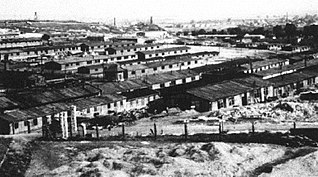
Płaszów or Kraków-Płaszów was a Nazi concentration camp operated by the SS in Płaszów, a southern suburb of Kraków, in the General Governorate of German-occupied Poland. Most of the prisoners were Polish Jews who were targeted for destruction by Nazi Germany during the Holocaust. Many prisoners died because of executions, forced labor, and the poor conditions in the camp. The camp was evacuated in January 1945, before the Red Army's liberation of the area on 20 January.
Aliyah Bet was the code name given to illegal immigration by Jews, many of whom were refugees escaping from Nazi Germany, and later Holocaust survivors, to Mandatory Palestine between 1920 and 1948, in violation of the restrictions laid out in the British White Paper of 1939, which dramatically increased between 1939 and 1948. With the establishment of the State of Israel in May 1948, Jewish displaced persons and refugees from Europe began streaming into the new state in the midst of the 1948 Palestine war.
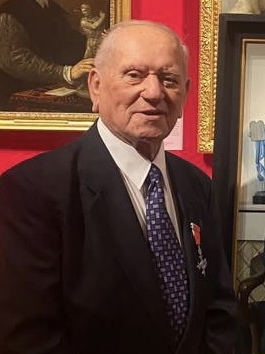
Arek Hersh, is a survivor of the Holocaust.

Gerda Weissmann Klein was a Polish-born American writer and human rights activist. Her autobiographical account of the Holocaust, All But My Life (1957), was adapted for the 1995 short film, One Survivor Remembers, which received an Academy Award and an Emmy Award, and was selected for the National Film Registry. She married Kurt Klein (1920–2002) in 1946.
Holocaust survivors are people who survived the Holocaust, defined as the persecution and attempted annihilation of the Jews by Nazi Germany and its allies before and during World War II in Europe and North Africa. There is no universally accepted definition of the term, and it has been applied variously to Jews who survived the war in German-occupied Europe or other Axis territories, as well as to those who fled to Allied and neutral countries before or during the war. In some cases, non-Jews who also experienced collective persecution under the Nazi regime are considered Holocaust survivors as well. The definition has evolved over time.
The One Thousand Children (OTC) is a designation, created in 2000, which is used to refer to the approximately 1,400 Jewish children who were rescued from Nazi Germany and other Nazi-occupied or threatened European countries, and who were taken directly to the United States during the period 1934–1945. The phrase "One Thousand Children" only refers to those children who came unaccompanied and left their parents behind back in Europe. In nearly all cases, their parents were not able to escape with their children, because they could not get the necessary visas among other reasons. Later, nearly all these parents were murdered by the Nazis.

Sir Benjamin "Ben" Helfgott was a Polish-born British Holocaust survivor, Olympian and champion weightlifter. He was one of two Jewish athletes known to have competed in the Olympics after surviving the Holocaust, along with Alfred Nakache, a French champion swimmer and water polo player. Helfgott spent his adult life promoting Holocaust education, meeting with national leaders in the UK to promote cultural integration and peace.

Nakam was a paramilitary organisation of about fifty Holocaust survivors who, after 1945, sought revenge for the murder of six million Jews during the Holocaust. Led by Abba Kovner, the group sought to kill six million Germans in a form of indiscriminate revenge, "a nation for a nation". Kovner went to Mandatory Palestine in order to secure large quantities of poison for poisoning water mains to kill large numbers of Germans. His followers infiltrated the water system of Nuremberg. However, Kovner was arrested upon arrival in the British zone of occupied Germany and had to throw the poison overboard.

The Central British Fund for World Jewish Relief formerly Central British Fund for German Jewry (CBF) which currently operates under the name World Jewish Relief (WJR), is a British charitable organisation and the main Jewish overseas aid organisation in the United Kingdom.

Frances Catherine Partridge CBE was an English writer. Closely connected to the Bloomsbury Group, she is probably best known for the publication of her diaries. She married Ralph Partridge in 1933. The couple had one son, (Lytton) Burgo Partridge (1935–1963).
Trevor Avery is an artist, curator and producer who has been based in London, the Highlands of Scotland, and is now in the North West of England.
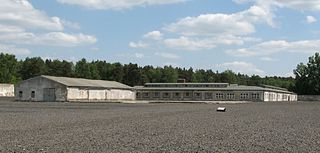
Ravensbrück was a Nazi concentration camp exclusively for women from 1939 to 1945, located in northern Germany, 90 km (56 mi) north of Berlin at a site near the village of Ravensbrück. The camp memorial's estimated figure of 132,000 women who were in the camp during the war includes about 48,500 from Poland, 28,000 from the Soviet Union, almost 24,000 from Germany and Austria, nearly 8,000 from France, almost 2,000 from Belgium, and thousands from other countries including a few from the United Kingdom and the United States. More than 20,000 of the total were Jewish. Eighty-five percent were from other races and cultures. More than 80 percent were political prisoners. Many prisoners were employed as slave laborer by Siemens & Halske. From 1942 to 1945, the Nazis undertook medical experiments on Ravensbrück prisoners to test the effectiveness of sulfonamides.
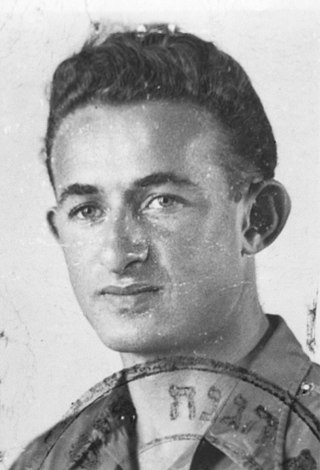
Joseph Harmatz was a Lithuanian Jew who fought as a partisan during World War II. After the war, he joined Nakam and plotted acts of revenge that were aimed at killing Nazis and other Germans to avenge Jewish deaths during the Holocaust. After emigrating to Israel, he headed World ORT, a Jewish non-profit organization that promotes education and training in communities around the world.
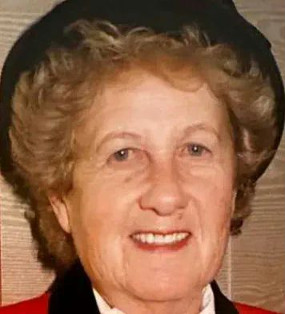
Judith Hemmendinger was a German-born Israeli researcher and author who specialised in child survivors of the Holocaust. During World War II, she was a social worker and refugee counselor for the Œuvre de secours aux enfants (OSE), a French Jewish children's aid organization based in Geneva, and from 1945 to 1947, she directed a home for child survivors of Buchenwald in France. She authored books and papers on the Holocaust experiences and later lives of child survivors. She was awarded the French Legion of Honor in 2003.

Troutbeck Bridge is a village in the civil parish of Windermere and Bowness, in the Westmorland and Furness district, in the ceremonial county of Cumbria, England. It is situated 1 mile north of Windermere on the A591 road running through the Lake District and was historically in the county of Westmorland. The main secondary school for Windermere and Ambleside, The Lakes School, is located in the village, as is the postal sorting office for the area. Troutbeck Bridge takes its name from where the road crosses the Trout Beck.

Gilbert and Eleanor Kraus were an American couple known for rescuing 50 Jewish children prior to the beginning of World War II.

The Windermere Children is a 2020 British biographical drama television film written by Simon Block and directed by Michael Samuels. Based on the experience of child survivors of the Holocaust, it follows the children and staff of a camp set up on the Calgarth Estate in Troutbeck Bridge, near Lake Windermere, England, where the survivors were helped to rehabilitate, rebuild their lives, and integrate into the British society. The film was produced by Simon Block as 'executive producer' with Nancy Bornat as factual producer and Ben Evans as development producer. The film first aired on BBC Two in January 2020.
Mala Tribich is a Polish-born British Holocaust survivor and educational speaker.